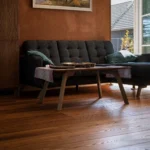Which of us hasn’t been in the circumstance where we’re looking for our dream house and fall in love with what we believe is the greatest competitor at the time, based on a fireplace?
The fireplace or hearth position is usually an afterthought, and once we start designing a plan, many of us quickly learn that our fireplace is a corner unit, posing a larger design difficulty than we imagined.
Traditionally, the center of the home was the fireplace. We’ve become accustomed to the seemingly instinctive assumption that the fireplace must be the major focal point in a room. We will go to great lengths to create rooms based on their central location, even if that location such as a corner unit is not the optimal placement in a room in terms of a well-designed layout.
We reposition our furnishings to face it. We’ve mounted our flat-screen TVs above it. To generate even more focus, we used contrasting paint colors. All of this extra effort for an often unpleasant and badly constructed place based on the aspect we initially fell in love with! We frequently feel trapped in the corner unit, and short of donning a hardhat and sledgehammer, we surrender to the terrible arrangement.
Not to worry! I have a few design techniques in my sleeve to assist you to overcome the sharp angles of that troublesome corner fireplace and create a well-designed and useful area.
Primary vs. secondary focus
The first phase is entirely psychological in nature. We’ve grown so accustomed to the fireplace being the major focal point in a room that it’s tough to demote it to second place. It’s all right! Remove yourself from that frame of mind. In reality, a room can have two focus points, and the fireplace does not have to be the dominant one!
Recreate your core focus
Rather than hanging your TV above the mantle, which creates an exaggerated focal point, moves it to a different wall and visually ground it with a heavier item below, such as a credenza. This will direct your attention away from the fireplace and onto a visually heavier vignette in the room.
Placement of furniture
The furniture is automatically adjusted to face the TV now that we’ve relocated it from above the fireplace, giving attention to the newly formed major focal point.
Consider the forms of your furniture and asymmetrical furniture placement in your space
People like linear lines on furniture, especially when purchasing furniture for slanted rooms, such as those that coincide with corner fireplaces. Consider furniture with softer forms, such as a round or oval coffee table and end tables. We soften the mood of the room by doing so, pulling attention away from the hard lines and angles. Rugs that are round or irregular in shape are also an excellent method to draw attention away from angles. Another method is to use an asymmetrical arrangement to divert the eye’s attention away from a point that a symmetrical pattern accentuates.
Paint color selection
As I mentioned in the introduction, people naturally design a room with the fireplace as the focal point, and paint colors are frequently chosen to highlight the feature. If you want to draw attention away from the fireplace, paint it the same color as the surrounding walls so that it blends into the backdrop. For example, if you have a larger stone mantle that cannot be painted, try painting the surrounding walls a color that matches the stone.
Make your fireplace a secondary focus point:
It is critical to make every design decision in a room look deliberate. Even though we are utilizing strategies to drive the eye away from a corner fireplace and completely neglect it in this situation, it really attracts attention to it rather than away from it. Because of its size and scale in the room, it will remain a focal point, although a secondary one.
Consider creating a small seating area in front of or to the side of the fireplace to make it appear to be a purposeful architectural decision. It will give the element enough prominence so it appears well-designed and was intended to be in the room, without completely overshadowing the area.







